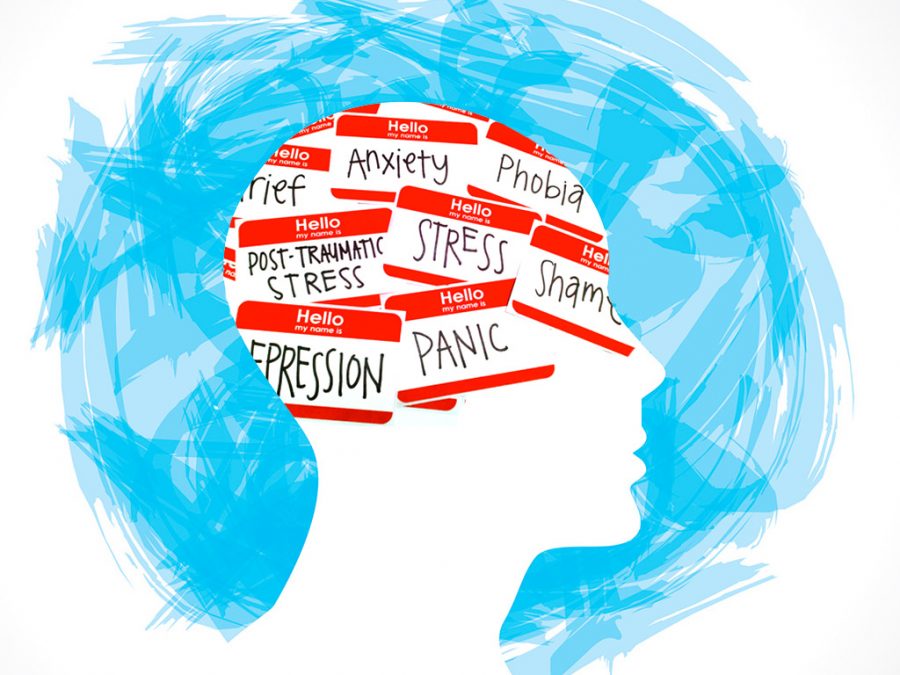One year later the Get Schooled Tour still fails to grasp students mental health concerns
Photo used with permission of The People Speak.
According to the National Alliance on Mental Health half of all chronic mental illnesses begin by age 14.
March 28, 2019
On March 27, 2018 I posted my first article on Fishersnthered.com titled “Get Schooled Tour fails to grasp extent of mental health”, detailing the convocation I attended days before: the Get Schooled Tour (GST), a concert-style program in which music, video testimonies and interactive polling are used in an attempt to engage students, start a “conversation” and break the stigma behind mental illness.
One year later, students’ mental health needs still are not being met; more importantly, their voices on the important topic of mental illness are not being heard and it is not at the fault of HSE schools. On March 27 of this year, student body president senior Joey Cerone, Bring Change to Mind Club board member senior Katie Wiseman and I attended a meeting with intentions to address the issues we had identified with GST and try to find a better solution that students would connect to more. Instead, we were greeted by Clinton Faupel, co-founder and executive director of RemedyLIVE (GST’s parent organization) and his coworker Mark (no last name was given or is available via GST websites).
Early into this meeting, it became clear that the “conversation” GST was set on having was one in which they belittled teenagers into believing their message. This intrusive behavior escalated to the point of singling out one of us, asking if we ourselves suffered from a mental illness and if that is why we were not responsive to the program. The meeting concluded with a negative air and a question lingered long after Faupel and his colleague had left: how do we fix this?
Let me say first and foremost I am not asking how to fix mental illness. Honestly, I do not think mental illness is something to be fixed as much as something that needs attention either from medication, therapy, coping mechanisms or a combination of the three. On Feb 20, 2019 the New York Times reported that teenagers feel that depression and anxiety are important issues among their peers, issues that need to be discussed in a safe, open-minded space. However, the GST creates a space in which students feel more closed off than ever. Junior Maddy Horne, who attended the convocation on Wednesday, felt this herself.
“The entire thing was basically ‘if you’re depressed talk to your friends, they’ll help you,’ ” Horne said. “I also felt like they were saying ‘you’re responsible for your own mental health.’ At the end of it all, it was terribly executed.”
Keeping Horne’s opinion and the meeting in mind, I cannot help but wonder what GST is really all about. At its core, GST is a organization that is being paid lots and lots of money to put on a show, to sell a product, to encourage kids to, as they would say, “start a conversation”. However, when given the opportunity to have a conversation with students, GST rides it off opposite opinions as upset kids with mental health issues, which completely defeats the entire point of the program itself.
I talked to 15 other students besides Horne, seniors who had seen the presentation a year prior and juniors who experienced GST for the first time on Wednesday. Both groups of students shared the sentiment that the light-hearted feel was insensitive, the jokes were cheesy and out of place, the music was overwhelming, and the program’s content was too jam-packed to actually get anything meaningful out of the seminar. This combined with the lack of help for those struggling made for a confusing, upsetting SMART period.
Students from HSE high school also experienced GST and their feelings mirrored those of the juniors and seniors from before. Brianne Arnold, a junior at HSE, explained how her friend felt upset after the program and wanted to go to the “talk room” GST had promised kids. The “talk room” is supposed to be a space where if you needed help, you could seek it immediately with assistance from trusted adults. Arnold’s friend was instead sent to her guidance counselor, someone she did not feel a close connection with and was not comfortable in discussing the sensitive issues GST had brought up. More importantly, this situation shows how GST failed to deliver on the one solid part of its presentation.
All in all, GST is upsetting to students, neglectful to their core message and careless with their handling of real mental illness issues that arise. To truly “start a conversation” GST and Faupel need to respect the opinions and ideas of the students they are trying to help first and realize that the environment they have created is one in which the students are not the ones who need to “Get Schooled” on mental health issues.















